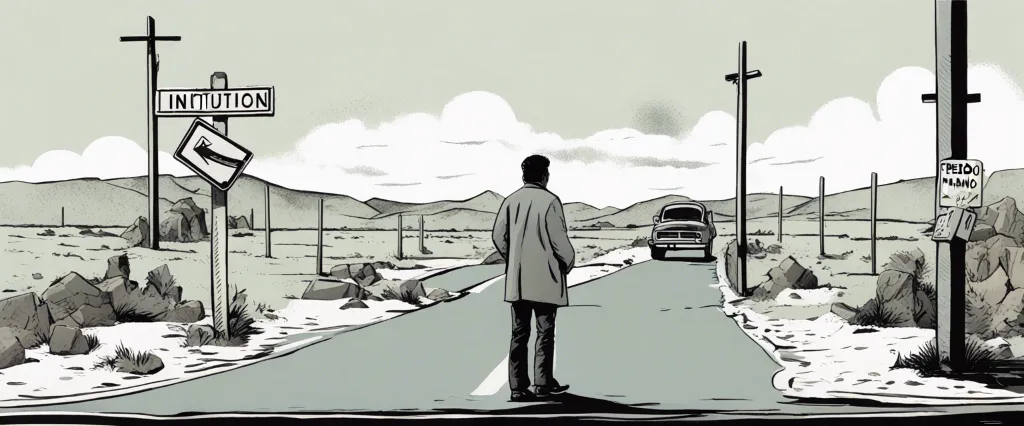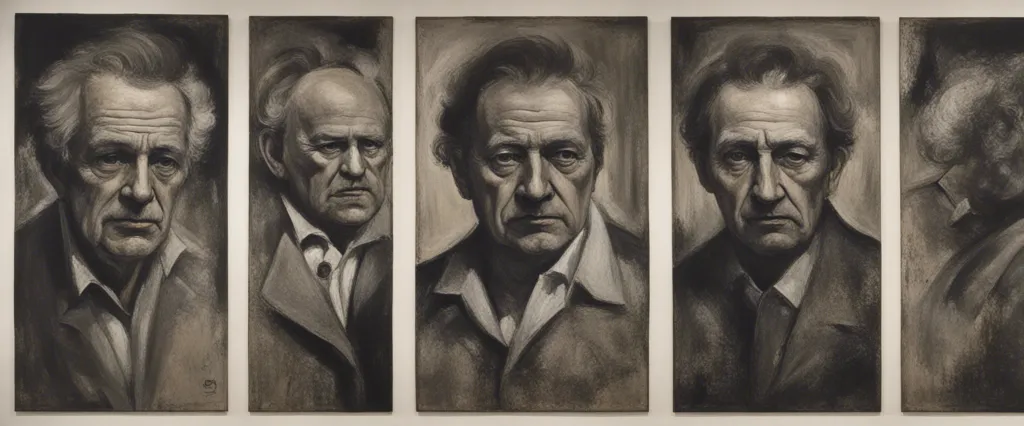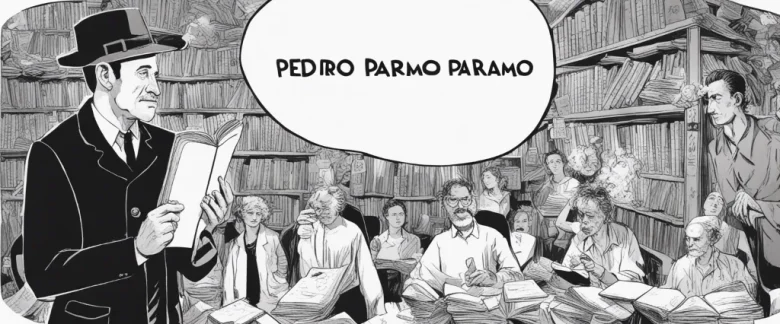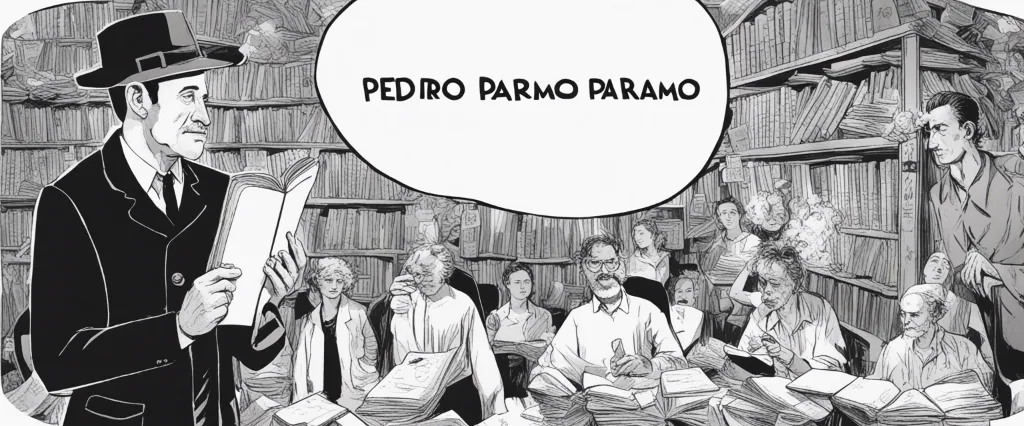Pedro Paramo by Juan Rulfo is a haunting and enigmatic novel that delves into the profound themes of death, memory, and the solace found in the realm of the supernatural. Set in the desolate town of Comala, the story follows Juan Preciado as he journeys to his mother’s hometown in search of his estranged father, Pedro Páramo. As the narrative unfolds, the boundaries between the living and the dead blur, leaving the reader questioning the nature of reality itself. Juan Rulfo, the Mexican author of this iconic work, is widely regarded as one of the most influential writers of 20th-century Latin American literature. Born in Jalisco, Mexico, in 1917, Rulfo experienced the harsh realities of rural life, which strongly influenced his writing. With Pedro Páramo, Rulfo masterfully weaves together elements of magic realism with a lyrical and evocative prose, solidifying his reputation as a literary visionary.
Chapter1:The Search for Comala
Chapter 1 of “Pedro Paramo” by Juan Rulfo introduces the readers to the fictional Mexican town of Comala, where the protagonist, Juan Preciado, embarks on a search for his estranged father, Pedro Paramo. The chapter details his journey towards the town and sets the eerie and supernatural tone that permeates the entire novel.
Juan’s mother, Dolores Preciado, on her deathbed, encourages her son to seek out his father and reclaim the land that rightfully belongs to them in Comala. With this mission in mind, Juan travels to the desolate town filled with abandoned houses, scattered graves, and memories of a forgotten past.
As he arrives at Comala, Juan encounters a ghostly aura that envelopes the town. The air is heavy with the presence of deceased spirits, making it feel like a haunted land. He meets an old woman named Eduviges, who cryptically warns him about Pedro Paramo’s dark reputation and advises him to leave Comala.
While wandering through the town, Juan learns about its corrupt history and the ruthless control Pedro Paramo exercised over the people of Comala. The residents he encounters are apathetic, resigned to their fate, and trapped in their own memories. The author skillfully portrays their voices as echoes of the past.
In this first chapter, Rulfo establishes the themes of death, loneliness, and abandonment that recur throughout the novel. He also introduces the surreal and dreamlike atmosphere that characterizes Comala, creating an enigmatic and unsettling backdrop for Juan’s search.
Chapter 1 serves as a proper foundation for readers to understand the desolate and haunted world of Comala, fuelling their curiosity to unravel the mysteries surrounding Pedro Paramo and the fate of Juan Preciado.
Chapter2:Pedro Páramo’s Reign
Chapter 2 of Juan Rulfo’s novel “Pedro Páramo” delves into the reign of the eponymous character, Pedro Páramo. The chapter opens with the narration focusing on Páramo’s dominance over the town of Comala, both during his life and after his death.
The narrative weaves between present and past, as various characters reminisce about Páramo’s reign. We learn that Pedro was a powerful and influential hacendado who controlled the region’s land and resources. He ruled with an iron fist, and those who opposed him would suffer severe consequences. Páramo exploited the peasants working on his land, taking advantage of their labor and impoverishing them further. His tyranny was characterized by violence, corruption, and the abuse of power.
However, as Páramo grew older, his power diminished, and he became a remorseful and lonely old man. The chapter introduces the perspective of Eduviges Dyada, a woman who was Páramo’s longtime mistress. Eduviges recalls how her relationship with Páramo gradually deteriorated as he became consumed by guilt and loneliness. Páramo’s daughter, Miguelita, who was a product of their affair, also remembers her father’s eventual decline.
Throughout the chapter, there is a recurring theme of death and its connection to Páramo’s reign. The town is depicted as a place haunted by the spirits of those who have been oppressed by him. The ghosts of the deceased remind the reader that Páramo’s tyrannical rule extended beyond his mortal life.
Overall, Chapter 2 of “Pedro Páramo” explores the depth of Pedro Páramo’s reign and the consequences of his actions. It offers insights into the character’s transformation from a powerful figure to a remorseful man plagued by his guilty conscience, while also highlighting the lingering effects of his oppressive rule on the people of Comala.
Chapter3:The Voices of the Dead
Chapter 3 of Pedro Paramo, titled “The Voices of the Dead,” delves further into the haunting atmosphere of the ghost-town of Comala. The chapter is narrated by various dead characters, each offering their individual perspectives and experiences.
The chapter begins with Dolores Preciado, who reminisces about her failed love affair with Pedro Paramo, the central character of the novel. She speaks from beyond the grave, expressing her everlasting love for Pedro and the pain she suffered throughout their relationship.
Next, a priest interjects, revealing his sins and regrets as he confronts his own death. It becomes apparent that the priest was unwillingly involved in the sins and corruption of the town, further highlighting the dark and oppressive nature of Comala.
Juan Primito, a young boy who died years ago, also speaks from the grave. He recalls his mother’s love and questions the existence of God and the purpose of life. Juan Primito’s innocence and philosophical reflections contrast with the guilt-ridden voices of the other dead characters.
Rulfo introduces several other spirits, each sharing their unique perspectives on life and death, unveiling the deep-seated pain, guilt, and suffering that permeate Comala. These different voices serve to paint a vivid picture of the town’s haunted existence, where the lines between the living and the dead continue to blur.
Overall, Chapter 3 of Pedro Paramo, “The Voices of the Dead,” offers a glimpse into the inner world of the deceased inhabitants of Comala, providing insight into their struggles, regrets, and relentless longing for redemption. Through these haunting voices, Rulfo further emphasizes the themes of death, grief, and the consequences of human actions that dominate the novel.
Chapter4:Susana San Juan’s Tragedy

Chapter 4 of Pedro Paramo begins with the introduction of Susana San Juan, a beautiful and fragile young woman. Susana lives in the San Juan ranch and is known for her tragic past, having lost her father, her brother, and her aunt in quick succession. She develops a sudden illness and is confined to her room, where she spends her days in silence.
The chapter delves into the memory of Susana, revealing the source of her melancholy. She recounts the story of her childhood, highlighting her unrequited love for a childhood friend named Florencio Montiel. Florencio comes from a poor family, and Susana’s mother disapproves of their relationship. Despite this, Susana and Florencio develop a secret bond, meeting at the river to express their love for each other.
One day, Florencio stops coming to their meeting place, leaving Susana heartbroken. She later learns that he has been beaten to death by soldiers for his involvement with leftist groups. Susana’s disillusionment and grief lead to her deterioration, both physically and mentally.
As Susana’s suffering intensifies, Juan Preciado, the protagonist of the novel, arrives at Comala in search of his father, Pedro Paramo. He hears about Susana’s tragic state and her confinement in her room. Desperate to find answers about his father, Juan attempts to speak with Susana, but she remains silent and unresponsive.
Overall, Chapter 4, “Susana San Juan’s Tragedy,” focuses on the profound impact of lost love and the consequences it has on Susana’s emotional and mental well-being. Her story serves as a haunting parallel to the overall atmosphere and themes of the novel, highlighting the sense of despair and decay that reigns in the town of Comala.
Chapter5:The Sins of the Fathers
Chapter 5 of Juan Rulfo’s Pedro Paramo, titled “The Sins of the Fathers,” delves deeper into the complex web of the past and the sins that haunt the protagonists of the story. The chapter primarily focuses on the character of Pedro Paramo and provides more insight into his ruthless nature and his impact on the town of Comala.
The chapter opens with Pedro’s illegitimate son, Miguel Paramo, arriving in Comala after hearing about his father’s death. He meets Father Renteria and reveals his true identity, hoping to claim his inheritance. However, Father Renteria refuses to accept him, still bitter about the grievances caused by Pedro and his lineage.
While wandering through the town, Miguel encounters Eduviges Dyada, a woman resembling his deceased mother. He becomes infatuated with her, but she exposes his father’s cruel nature, disclosing the fate of Susana San Juan, a past lover of Pedro who was driven to madness and death. Pedro’s sins are revealed as he appears to be responsible for the demise of Susana and countless others.
Throughout the chapter, the dark presence of Pedro Paramo looms over Comala, causing fear and anguish in its residents. His greed and manipulation have left a trail of destruction, and the townspeople grow increasingly resentful, realizing that their suffering is a direct result of his actions.
“The Sins of the Fathers” showcases the consequences of Pedro Paramo’s immoral behavior and the generational curse that haunts the town. Rulfo skillfully portrays a web of sin and guilt that intertwines the lives of the characters, creating a haunting atmosphere and setting the stage for further revelations in the remainder of the novel.
Chapter6:The Ghosts’ Lament
In Chapter 6, “The Ghosts’ Lament,” of the novel Pedro Páramo by Juan Rulfo, the narrative shifts to the perspective of the deceased inhabitants of Comala. The chapter begins with the ghosts of dead women haunted by the loss and pain they experienced in life. These women lament their futures ruined by men and their own choices. They long for release from their suffering and seek to be heard by the living.
The ghosts wander through the town, meeting other wandering spirits on their journey. They encounter Pedro Páramo, the protagonist, who can see and communicate with the dead. The spirits recount their earthly sorrows and divulge their unfinished business, yearning for some resolution that death denies them.
The chapter further develops the theme of neglect and abandonment. The ghosts reveal their sad and lonely existence, highlighting the harsh and oppressive nature of Comala. There is a sense of collective mourning and a desire for the living to acknowledge their memories and injustices.
As the chapter progresses, the narrative becomes more surreal and fragmented, blurring the lines between the living and the dead. The ghosts’ voices merge, and their stories intertwine, creating a chorus of grief and frustration. The chapter ends with an atmosphere of despair and longing for peace, as the spirits continue their search for redemption and relief.
Overall, “The Ghosts’ Lament” provides a haunting exploration of the consequences of unfulfilled lives, showcasing the perpetual suffering experienced in Comala, both in life and beyond.
Chapter7:Juan Preciado’s Fate
Chapter 7 of the book “Pedro Paramo” by Juan Rulfo focuses on the fate of Juan Preciado, the protagonist who has returned to Comala to find his father, Pedro Paramo. As the chapter progresses, Juan’s circumstances become increasingly ominous and he finds himself trapped in a realm between life and death.
At the beginning of the chapter, Juan encounters a group of women who seem to have emerged from their graves. These women, who include his mother, Dorotea, and his former lover, Susana San Juan, begin to recount their tragic stories. It becomes clear that these women have suffered greatly under the abusive and oppressive rule of Pedro Paramo.
As Juan continues his search, he is haunted by the ghosts of the past. Their voices echo through the deserted town, reminding him of their untimely deaths and the sins committed by his father. The atmosphere is eerie, and Juan feels a growing sense of unease and foreboding.
Juan’s fate takes a darker turn when he is visited by the apparition of his own father, Pedro Paramo. Pedro’s ghostly presence fills him with fear and the realization that he too is bound to die just like all the other inhabitants of Comala. Juan’s journey to find his father has become a journey towards his own death.
The chapter concludes as Juan encounters the Ghost Town, a desolate place where the spirits of those who have died continue to linger. Here, Juan is confronted by the ghosts who have shaped his fate and the town itself. The chapter ends with Juan succumbing to the inevitability of his death, becoming just another ghostly presence in the town of Comala.
In Chapter 7 of “Pedro Paramo,” Juan Preciado’s search for his father leads him into a nightmarish realm where the boundaries between life and death blur. The chapter emphasizes the tragic fate that awaits Juan, as he becomes entangled in the guilt-ridden landscape of Comala.

Chapter8:The Cycle of Death and Redemption
Chapter 8 of “Pedro Paramo” by Juan Rulfo is crucial in understanding the cycle of death and redemption that permeates the novel. This chapter is narrated by Eduviges Dyada, a woman who dies during childbirth and finds herself trapped in the afterlife. Her narrative serves as a bridge between the living and the dead, shedding light on the consequences of human actions and the possibility of redemption.
Eduviges Dyada’s story begins with her death and subsequent journey to Comala, a ghost town haunted by the memories and sins of its inhabitants. As she wanders through this desolate place, she encounters various dead characters, each one tormented by their past deeds. The town’s eternal night and silence reflect the oppressive atmosphere, emphasizing the notion that the living must be held accountable for their actions.
Throughout the chapter, Eduviges Dyada encounters different characters, all seeking redemption for their sins. This emphasizes the cyclical nature of death and redemption in Comala. Individuals in the town are doomed to relive their past mistakes until they find redemption, symbolized by the constant repetition and recurrence of certain events and dialogues.
The chapter concludes with Eduviges Dyada’s encounter with Pedro Paramo, the wealthy landowner who plays a central role in the novel. Paramo is tormented by guilt and remorse for the sins he committed while alive. This encounter portrays the possibility of redemption even for the most morally compromised characters.
In summary, Chapter 8 of “Pedro Paramo” explores the cycle of death and redemption through the perspective of Eduviges Dyada as she navigates the ghost town of Comala. It highlights the inescapable consequences of human actions and presents the opportunity for redemption, even in the face of profound guilt and sin. The chapter deepens the understanding of the novel’s overarching themes, such as the power of memory, the weight of past actions, and the potential for transformation and forgiveness.
After Reading
In conclusion, “Pedro Páramo” by Juan Rulfo is a haunting and surreal novel that delves into the themes of loneliness, death, and the search for identity. Through the fragmented narratives and the intertwined stories of various characters, Rulfo creates a rich and complex portrayal of the fictional town of Comala. Blurring the lines between reality and the afterlife, the novel challenges the reader to question the nature of existence and the lasting impact of our actions. “Pedro Páramo” stands as a timeless masterpiece of Mexican literature, leaving a lasting impression on its readers as they journey through the haunting landscapes of both the physical and spiritual realms.
1. One Hundred Years of Solitude” by Gabriel Garcia Marquez: This iconic novel, similar to “Pedro Paramo,” blends reality and fantasy in the story of the Buendia family. Set in the fictional town of Macondo, it explores themes of magical realism, family history, and the cyclical nature of life.
2. “The House of the Spirits” by Isabel Allende: This multi-generational family saga, like “Pedro Paramo,” incorporates elements of magical realism. Following the Trueba family, it delves into themes of love, politics, and social change in Chile, as well as the complexity of familial relationships.
3. “The Sound and the Fury” by William Faulkner: This classic American novel, akin to “Pedro Paramo,” employs nonlinear narrative and stream-of-consciousness techniques to tell the story of the Compson family. It explores themes of decadence, decline, and the disintegration of Southern ideals.
4. “Beloved” by Toni Morrison: Like “Pedro Paramo,” this novel delves into themes of haunting pasts and the impact of history on personal lives. Set in post-Civil War America, it tells the story of Sethe, a former slave haunted by the memories of her past, as well as the ghost of her child.
5. “One Hundred Years of Loneliness” by Reinaldo Arenas: A remarkable Cuban novel, similar to “Pedro Paramo,” explores themes of solitude, memory, and the loss of identity. Through the story of an unnamed protagonist, it unravels the oppressive political climate in Cuba, while reflecting upon the challenges faced by individuals in preserving their own humanity.




